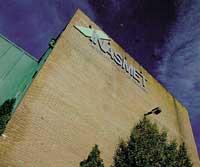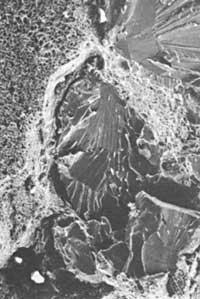Development of the electrochemical system
1998/11/01 Elhuyar Zientzia Iturria: Elhuyar aldizkaria
Cutting fluids known as cutting emulsions in the industrial sector are mainly used in machining parts, milling and extrusion. Of course, the objective is that the high temperatures that occur during the notch of the cutting teeth in the part do not cause oxidation or loss of the hardening of the parts to be machined. As is known, cutting emulsions are frequent in the industrial world. It is a mixture of oil and water with both organic and inorganic additives. The function of additives is to avoid the loss of emulsion quality by time and working conditions.
In view of the above, it is clear that emulsions can cause many environmental problems, since when they are poured into rivers or the sea the emulsion breaks, covering the surface with a layer of oil very harmful to plants and animals.
In addition, some additives are themselves toxic. There is the problem. Although there are many types of cutting emulsions, the same uncertainties as the manufacturer can be grouped into three groups: mineral, semi-synthetic and synthetic cutting emulsions. For each type of cutting emulsion different waste treatment systems and channels have been used to date with their advantages and drawbacks. One of the highlights of the system created by Inasmet and the companies that have collaborated with it is that it can be used with any cutting emulsion. And that's important.
In fact, companies working in waste treatment receive the waste directly from many factories without knowing the same cutting emulsion that has been used frequently, without knowing whether it is mixed or not. In many other occasions the waste comes from companies called Transfer, once collected, stored for a time and reached a certain amount. In view of this, it is clear that the discovery of a system capable of performing a complete treatment can have a great influence on the industry in general and more directly in the waste industry. The electrochemical process developed in Inasmet works as follows: The waste subject to treatment is inserted into a phase 1 cell electrochemistry. A low-intensity current breaks the emulsion.
Then proceed to the decanting tank. In it is added a reagent with capacity to break the emulsion for a second time and the pH is adjusted to separate the oil and water as best as possible. Once this is done, the oil is collected in one tank and the water in another to continue the treatment. The water passes from the tank to a reactor by pumping to add a reagent that allows electroxidation. Finally, the cell electrochemical is reintroduced to phase 2, by electro-oxidation using an adequate current of intensity. Solid sludge is also generated in the last two process operations. Purgators are placed in the reactors to separate from the process as they are created.

Gai honi buruzko eduki gehiago
Elhuyarrek garatutako teknologia





